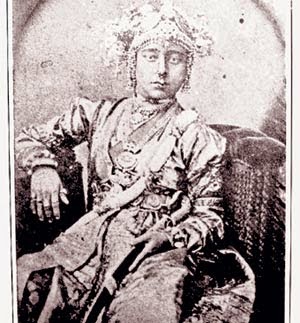 Cricket is a bat and ball game and played between
two teams of 11 player in each and the game is said to have originated in the
16th century
Cricket is a bat and ball game and played between
two teams of 11 player in each and the game is said to have originated in the
16th century  There is no definite proof about the origion of cricket
.majority of persons say that the cricket was orginated in england. According
to he 'wisdon',which is called the bible of god ,the cricket is mentioned first
time in 1300A.D it is verified from bat and ball,which were found in almirah of
'king edward'.the cricket word used in dictionary of florida. Possibly cricket
was derived from bowls.the some source say that in 1598 cricket is called
creckett.in 1706, william gold metioned a cricket match in his poem.In 1709,the
first cricket match was played between the teams of londan and kent.in 1710
cambridge university and in 1729 oxford university start playing cricket.
There is no definite proof about the origion of cricket
.majority of persons say that the cricket was orginated in england. According
to he 'wisdon',which is called the bible of god ,the cricket is mentioned first
time in 1300A.D it is verified from bat and ball,which were found in almirah of
'king edward'.the cricket word used in dictionary of florida. Possibly cricket
was derived from bowls.the some source say that in 1598 cricket is called
creckett.in 1706, william gold metioned a cricket match in his poem.In 1709,the
first cricket match was played between the teams of londan and kent.in 1710
cambridge university and in 1729 oxford university start playing cricket.
The
imortant lession of cricket start from 1760 A.D
.In 1760, the first cricket club was formed in england and club name was
hambuldon club .this club produced the famous player likke jhon nyren.the
second golden chapter of cricket history start from the establishment of
marylebone cricket club(MCC) .the club was formed in london in 1787, It is the
world's biggest cricket brand. the first
cricket match was played at lord's the famous cricket ground on june
27,1788.the first official test match was played in 15 march,1877 between
england and australia.this match won by australia, after that imperial cricket
conference was formed in england in 1909and along cricket got its international
recognisation in same year.besides england,australia and south africa became a
members of imperial cricket conference.In 1926,india,west indies and newzealand
alo became its members.pakistan also became its member in 1952.In 1971 south
africa was debarred from its membership due to racial policy.
The name
of this conference this conference changed to "international cricket
conference ".with passage of time other countries (besides commonwealth countries)also
got it membership. Now india, england, australia, sri lanka, westindies, new
zealand,pakistan,america,argentina,canada,denmark,kenya,zimbabwe,bangladesh,holland,bermuda,fiji,singapore,hong
kong,israel and malaysia,etc.are its member of associate members.
the
first one day match in cricket history was played on 5th january ,1971.this
one-day match was played between england and australia 40 over per innings were
fixed for this match. Australia won the game by 5 wickets.the credit of
organisation and development of one day international cricket matches also goes
to england as result the england organised first world cup in June 1975. The
teams of eight
countries took part in this world cup. west indies defeated australia by 17
runs during the final match of this world cup.
The
first ICC Twenty-20 world cup cricket was started in 2007, which contested in
south africa from 11 to 24 September 2007. Twelve teams took part in the
thirteen-day tournament. India won the tournament, beating Pakistan in the
final.
The brief cricket history of india
the
cricket was introduced in india after arrival of britishers.the history of
indian cricket begins from 1721
The
first cricket club of india was formed in calcutta in 1792. Inthe
beginning,cricket was played by kings and princes but now it has become a
popular game in india. The first team from india toured england in 1866. In the
beginning, the indian cricket players showed their capabilities by
participating in foreign teams .first
time ,maharaja ranjit singh, the member of english made a century in world cup
cricket. india played its first test match against england at lord,s ground in
1932.the ranji trophy was started in 1934. in 1928, under the chairmanship of
R.E Grant,the indian cricket control board was formed. IN 1983 and 2011 india
won the world cricket.
the first ICC Twenty-20 world cup cricket was
started in 2007 and india won the tournament beating the pakistan.
famous
cricket player in indian history: kapil
dev, Sachin Tendulkar, sunil gavasker, anil kumble, Rahul dravid, sourav
ganguly, mohammed azharuddin, vijay hazare ,v.v.s laxman


.jpg)
.jpg)
.jpg)
.jpg)
.jpg)




.jpg)
.jpg)
